 1979 Mazda 626 I (CB) Dimensions, Size & Specs
1979 Mazda 626 I (CB) Dimensions, Size & SpecsMeasurements of the 1979 Mazda 626 I, engineered for optimal performance and comfort
| Dimensions | |
|---|---|
| Length: | 4305 mm169.5 in14.1 ft |
| Width: | 1660 mm65.4 in5.4 ft |
| Height: | 1370 mm53.9 in4.5 ft |
| Weight Specifications | |
| Curb Weight: | 1045-1060 kg2304-2337 lbs |
| Tire Specifications | |
| Rims Sizes: | 13-inch rims:
|
| Tire Size: |
|
The Mazda 626 I (CB) sedan, produced between 1979 and 1982, represents Mazda's compact sedan offering in the late 1970s and early 1980s. This first-generation CB model is characterized by a balanced design focused on practical dimensions and lightweight construction. Measuring 4305 mm (169.3 inches) in length, 1660 mm (65.4 inches) in width, and 1370 mm (53.9 inches) in height, the 626 I (CB) fits comfortably into the compact car segment, making it suitable for both urban driving and longer journeys.
Weighing between 1045 kg and 1060 kg (2304 to 2337 lbs), this sedan offers a lightweight build that contributes to efficient fuel economy and agile handling. The vehicle rides on steel rims sized 5J x 13 and 5.5J x 13, paired with tires sized 185/70 R13, which provide a balance of ride comfort and road grip. The compact width of 1.66 meters and relatively low height support aerodynamic efficiency while maintaining interior space comfort for passengers.
Overall, the Mazda 626 I (CB) is a well-proportioned vehicle from the late 20th century, combining modest exterior size with functionality. It's an excellent example of a classic compact sedan that delivers practical dimensions without compromising on everyday usability.
Discover the standout features that make the 1979 Mazda 626 I a leader in its class
Have a question? Please check our knowledgebase first.
The Mazda 626 I (CB) sedan, produced between 1979 and 1982, measures 4305 mm (169.3 inches) in length, 1660 mm (65.4 inches) in width, and 1370 mm (53.9 inches) in height. These dimensions highlight the car's compact yet comfortable size typical of late 1970s sedans, providing an ideal balance between maneuverability in urban environments and interior space for passengers.
The curb weight of the Mazda 626 I (CB) ranges between 1045 kg to 1060 kg (2304 to 2337 lbs). This relatively light weight for a sedan of its era contributed positively to overall vehicle performance, allowing for agile handling and improved fuel efficiency compared to heavier models. Lighter weight enhances responsiveness and generally results in lower fuel consumption, which was an attractive characteristic for drivers during the late 1970s and early 1980s.
With a width of 1660 mm (65.4 inches), the Mazda 626 I (CB) is moderately narrow compared to modern cars, which often exceed 1800 mm in width. This narrower profile makes it easier to maneuver in tight city spaces and simplifies parking, especially in older urban areas with narrow streets. The compact width suits drivers who value convenience in congested environments without sacrificing interior comfort.
The 626 I (CB) came equipped with rims sized at 5J x 13 and 5.5J x 13, paired with tire dimensions of 185/70 R13. These comparatively smaller 13-inch rims and tires reflect the era's standard sizing, aiding in a comfortable ride and contributing to efficient fuel consumption through lower rolling resistance. The tire width and profile balance grip with ride comfort, making it suitable for everyday driving conditions.
The 626 I (CB) stands at 1370 mm (53.9 inches) tall, which is relatively low compared to many modern sedans that often exceed 1400 mm in height. This lower height provides a sleek, aerodynamic profile which can contribute to reduced wind resistance and improved fuel efficiency. However, it may slightly affect interior headroom, especially for taller passengers, but overall it balances sporty aesthetics with practical interior comfort.
Yes, the Mazda 626 I (CB) fits comfortably into a standard garage. With its length of 4305 mm (169.3 inches), width of 1660 mm (65.4 inches), and height of 1370 mm (53.9 inches), it falls well within typical garage dimensions, which usually measure at least 5500 mm (216.5 inches) in length and 2800 mm (110.2 inches) in width. Its compact size ensures easy parking without excessive maneuvering.
The Mazda 626 I (CB), introduced in 1979, featured a more modern and aerodynamic design compared to its predecessor, the first generation 626 (1970–1978). Dimensionally, the CB generation was slightly longer and wider, providing improved interior space and enhanced road presence. The overall build was more refined with aerodynamics taken into greater consideration, resulting in better fuel efficiency and driving dynamics. The CB's lighter weight also contributed to improved performance compared to the earlier, heavier model.
Compared to similar compact sedans from the late 1970s and early 1980s, such as the Toyota Corolla or Honda Civic of the era, the Mazda 626 I (CB) offered a balanced package with dimensions favoring slightly more length (4305 mm / 169.3 inches) and moderate width (1660 mm / 65.4 inches). Its weight of approximately 1045-1060 kg (2304-2337 lbs) was competitive, contributing to respectable fuel economy while providing a stable ride. This made the 626 a compelling choice for buyers looking for a practical, mid-sized sedan that was easy to drive and park.
The Mazda 626 I (CB) is equipped with a four-door sedan body style. This configuration offers convenient rear passenger access and a traditional trunk separate from the cabin, which is typical for family and commuter vehicles of its era. The sedan design enhances passenger comfort by providing a fixed roofline and structural rigidity while maintaining a modest cargo area suitable for everyday luggage and groceries. Its size and layout balance practicality with a streamlined profile.
Standard tire size for the Mazda 626 I (CB) is 185/70 R13 mounted on 13-inch rims sized 5J or 5.5J. The 185 mm tire width and 70% aspect ratio result in a tire profile that offers a comfortable cushioning effect, absorbing road irregularities well. The smaller 13-inch rim size aids in maintaining a smooth ride over rougher surfaces, an ideal characteristic for everyday driving conditions in various road environments seen during the late 1970s and early 1980s.
Discover similar sized cars.
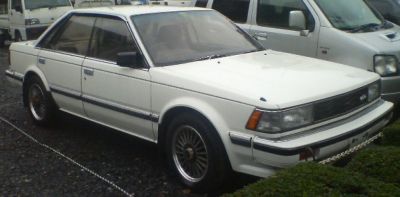
| Production: | 1983-1986 |
|---|---|
| Model Year: | 1983 |
| Length: | 4360 mm171.7 in |
| Width: | 1690 mm66.5 in |
| Height: | 1400 mm55.1 in |
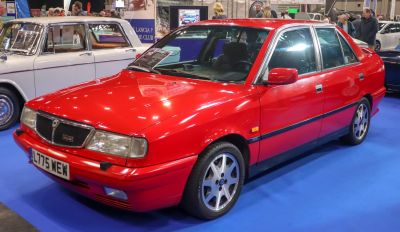
| Production: | 1989-1999 |
|---|---|
| Model Year: | 1989 |
| Length: | 4345 mm171.1 in |
| Width: | 1700 mm66.9 in |
| Height: | 1417-1430 mm55.8-56.3 in |
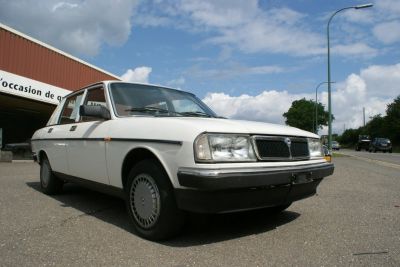
| Production: | 1982-1984 |
|---|---|
| Model Year: | 1983 |
| Length: | 4355 mm171.5 in |
| Width: | 1706 mm67.2 in |
| Height: | 1400 mm55.1 in |
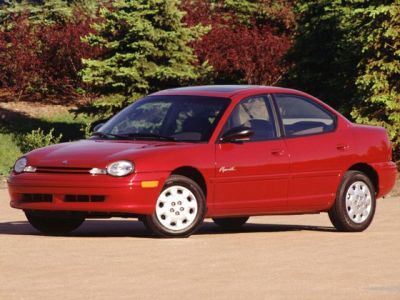
| Production: | 1994-1999 |
|---|---|
| Model Year: | 1994 |
| Length: | 4364 mm171.8 in |
| Width: | 1708 mm67.2 in |
| Height: | 1391 mm54.8 in |
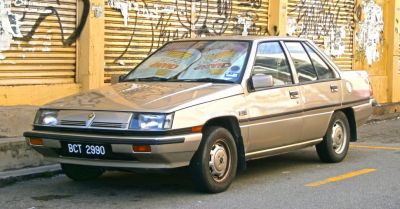
| Production: | 1985-1992 |
|---|---|
| Model Year: | 1985 |
| Length: | 4280 mm168.5 in |
| Width: | 1655 mm65.2 in |
| Height: | 1360 mm53.5 in |
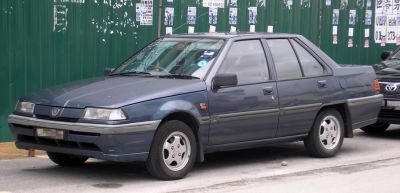
| Production: | 1992-2003 |
|---|---|
| Model Year: | 1992 |
| Length: | 4280 mm168.5 in |
| Width: | 1655 mm65.2 in |
| Height: | 1360 mm53.5 in |
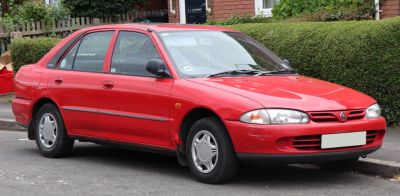
| Production: | 1993-2007 |
|---|---|
| Model Year: | 1993 |
| Length: | 4360 mm171.7 in |
| Width: | 1680-1690 mm66.1-66.5 in |
| Height: | 1385 mm54.5 in |
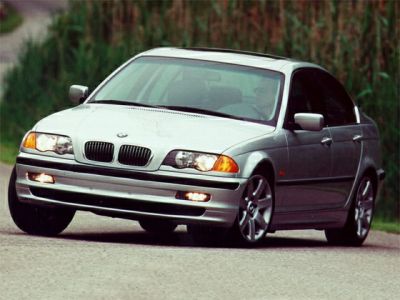
| Production: | 1990-2000 |
|---|---|
| Model Year: | 1991 |
| Length: | 4352-4433 mm171.3-174.5 in |
| Width: | 1698-1843 mm66.9-72.6 in |
| Height: | 1393-1568 mm54.8-61.7 in |
